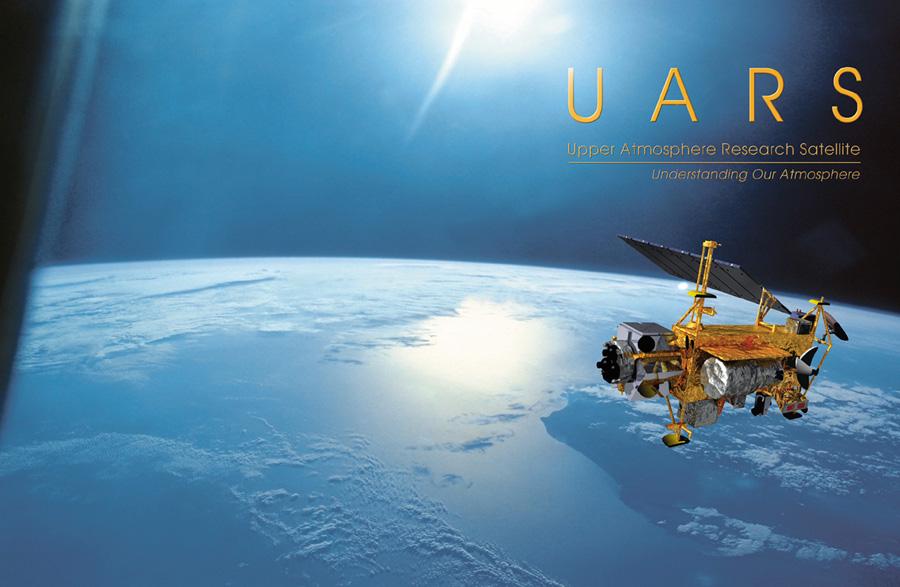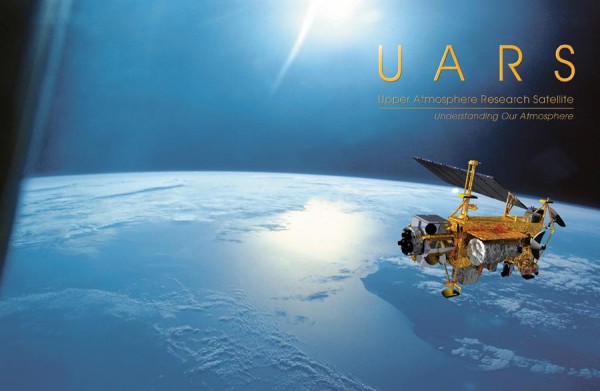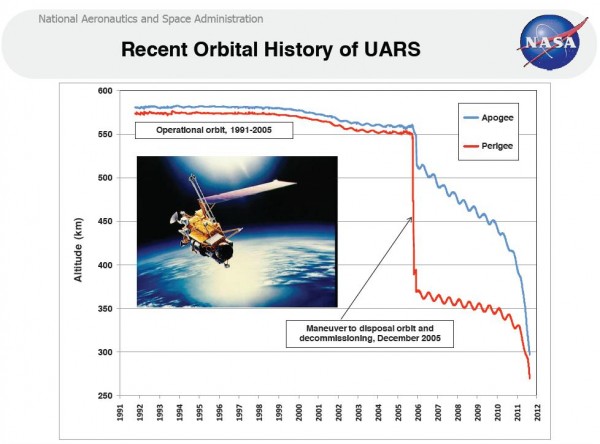UARS Re-entry Alert!

NASA reports that UARS, an atmospheric research satellite the size of a small bus, will re-enter Earth’s atmosphere on Sept. 23, plus or minus one day. Not all of the spectacularly-disintegrating spacecraft will burn up in the atmosphere; debris could be scattered along a ground track some 500 miles long. Because of the rapid evolution of UARS’s decaying orbit, the location of the debris zone is not yet known. A NASA risk assessment places the odds of a human casualty at 1:3200. For last-chance sightings of UARS, check the Simple Satellite Tracker or download the Satellite Flybys app for your smartphone. (SpaceWeather)
The satellite was launched in 1991 by the Space Shuttle Discovery. It is 35 feet long, 15 feet in diameter, weighs 13,000 pounds, and carries 10 instruments. UARS orbits at an altitude of 375 miles with an orbital inclination of 57 degrees. Designed to operate for three years, six of its ten instruments are still functioning. UARS measures ozone and chemical compounds found in the ozone layer which affect ozone chemistry and processes. UARS also measures winds and temperatures in the stratosphere as well as the energy input from the Sun. Together, these help define the role of the upper atmosphere in climate and climate variability. (UARS.GSFC.NASA)
No NASA or USG human casualty reentry risk limits existed when UARS was designed, built, and launched.
• NASA, the USG, and some foreign space agencies now seek to limit human casualty risks from reentering space objects to less than 1 in 10,000.
• UARS is a moderate-sized space object. Uncontrolled reentries of objects more massive than UARS are not frequent, but neither are they unusual.
– Combined Dragon mockup and Falcon 9 second stage reentry in June 2010 was more
massive.
• Since the beginning of the space age, there has been no confirmed report of an injury resulting from reentering space objects.
• NASA, DoD, and the IADC will be monitoring the decay and reentry of UARS carefully.



Pretty smart of NASA to put something this huge in orbit without a way of getting it back down when its usefulness ran out. Now we all have to look up every time we go outside.